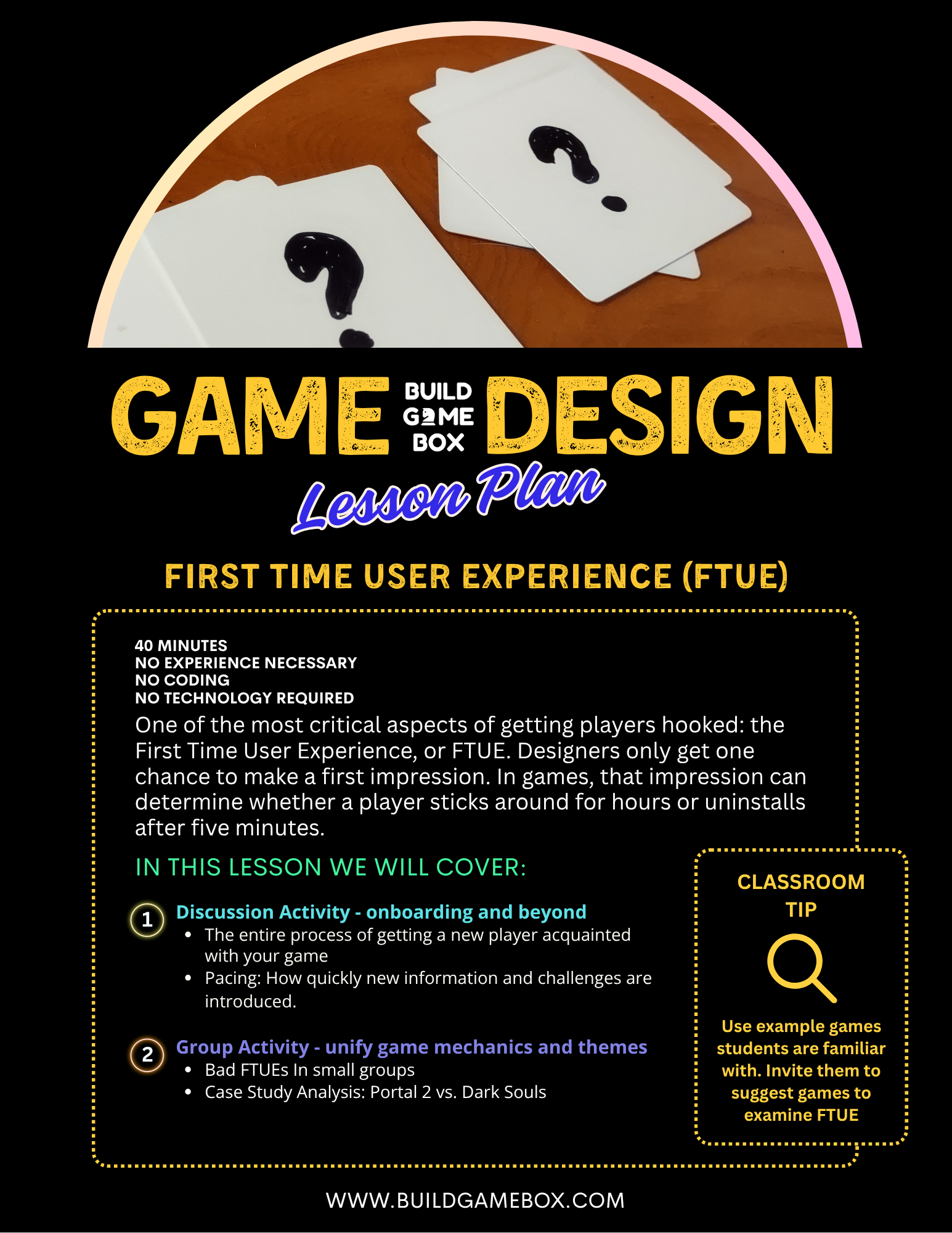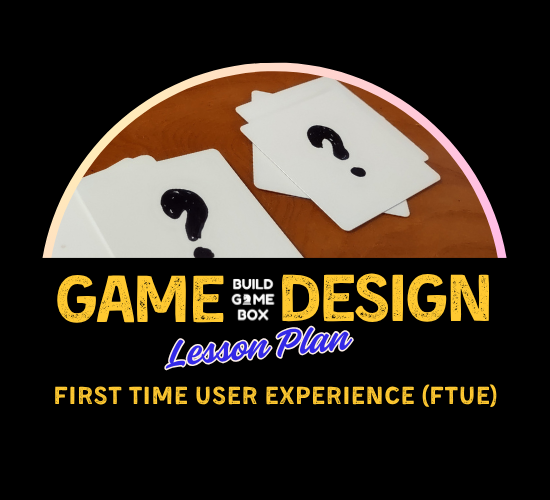

One of the most critical aspects of getting players hooked: the First Time User Experience, or FTUE. Designers only get one chance to make a first impression. In games, that impression can determine whether a player sticks around for hours or uninstalls after five minutes. This lesson will dissect what makes a great FTUE and why it's so vital.
Learning Objectives
By the end of this lesson, you should be able to:
-
Define First Time User Experience (FTUE) in the context of video games.
-
Identify the key goals of an effective FTUE.
-
Recognize common pitfalls in FTUE design.
-
Analyze examples of strong and weak FTUEs from existing games.
-
Propose strategies for improving the FTUE in a given game scenario.
Key Concepts
-
Onboarding: The entire process of getting a new player acquainted with your game.
-
Tutorialization: The specific methods used to teach game mechanics (e.g., guided tours, tooltips, interactive sequences).
-
Player Retention: How likely a player is to continue playing your game after their initial session. A good FTUE is crucial for this.
-
Cognitive Load: The amount of mental effort required to understand new information. A good FTUE minimizes this.
-
Pacing: How quickly new information and challenges are introduced.
-
Motivation & Hook: What immediately grabs the player's attention and makes them want to continue.
Activities
-
Discussion Starter: Your First Impression Recall a game you recently started playing. What was your initial experience like? What did the game do well or poorly in introducing you to its world and mechanics? Share your thoughts with a partner, then we'll discuss as a class.
-
Group Brainstorm: Bad FTUEs In small groups, list some common mistakes games make during their FTUE. Think about overwhelming information, unclear objectives, or frustrating early challenges.
-
Case Study Analysis: Portal 2 vs. Dark Souls We'll briefly look at the opening sequences of these two games. How do they approach FTUE differently, and why are both considered successful despite their contrasting methods? What do they prioritize in their initial moments?
-
Design Challenge: Mobile Puzzle Game FTUE Imagine you're designing a new mobile puzzle game. In your groups, propose three core elements you'd focus on for its FTUE to ensure players understand the game quickly and feel engaged. Be ready to share your ideas.
Homework
-
Play & Analyze: Choose two games you've never played before (one highly rated for its tutorial, one that's notorious for a bad one, if you can find it!). Play each for at least 30 minutes, focusing only on the FTUE. Write a short analysis (250-300 words) for each, detailing what worked, what didn't, and why.
-
Further Reading: Read "The Art of Onboarding" by Celia Hodent (chapters 1-3).
-
Further Watching: Find a "first 10 minutes" gameplay video of a game you're interested in and critically evaluate its FTUE.
Conclusion Things to remember: the FTUE isn't just a tutorial; it's the player's entire first impression. It's about teaching, yes, but also about engaging, motivating, and setting the stage for the rest of their experience. Get this right, and you're well on your way to player retention. Next time, we'll talk about how to keep those players thinking deeply with meaningful choices!
